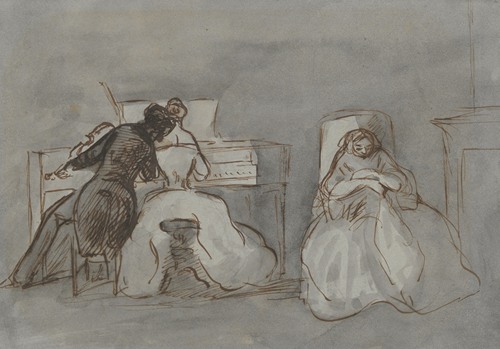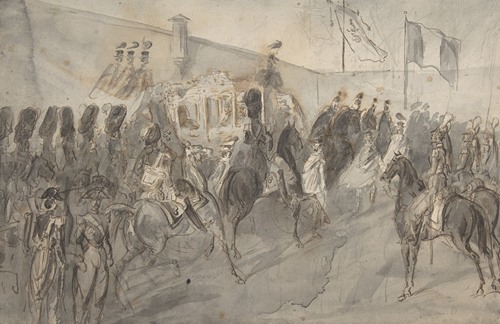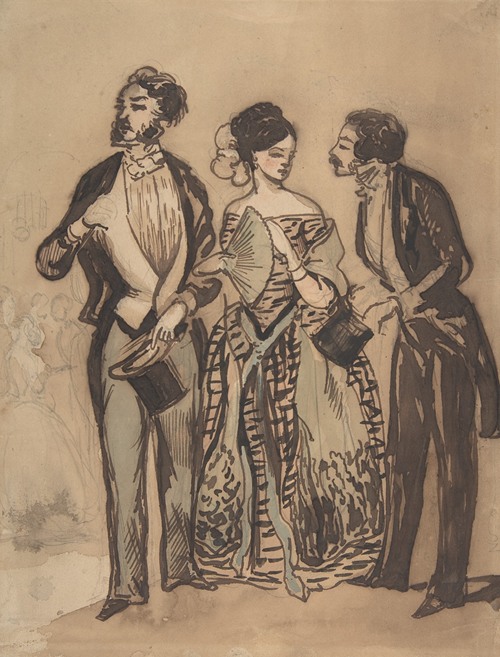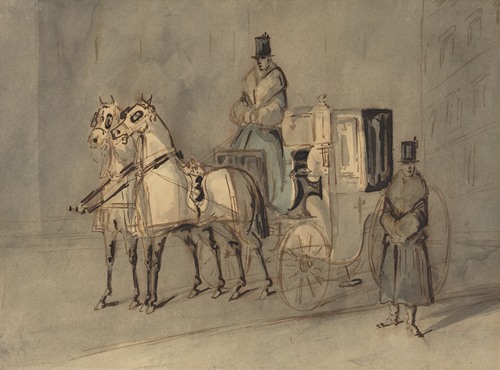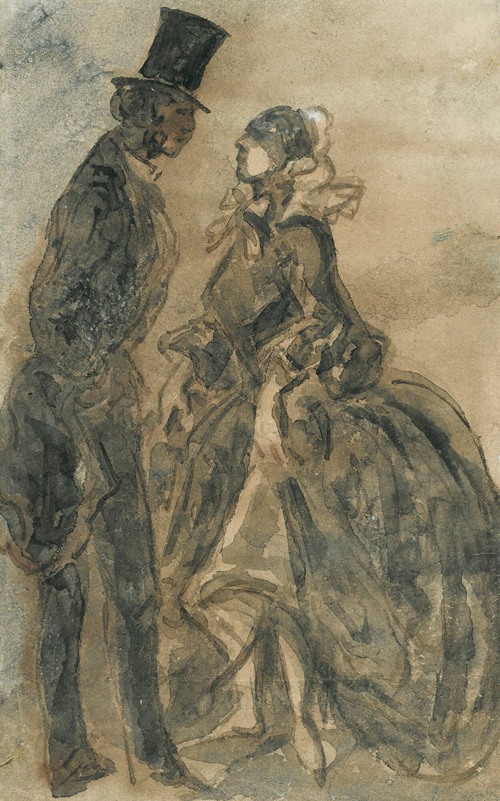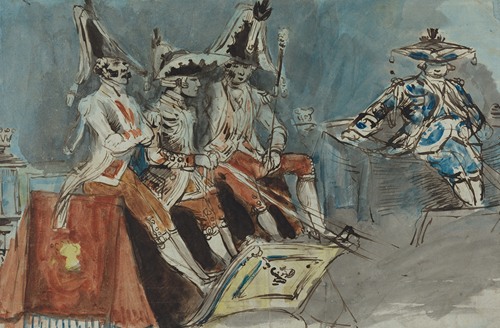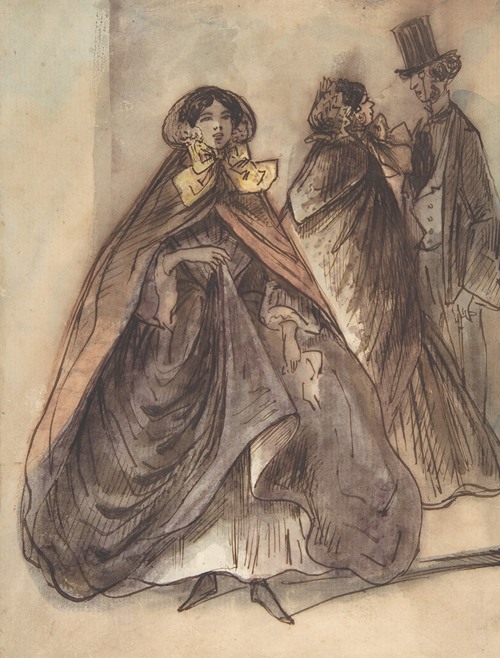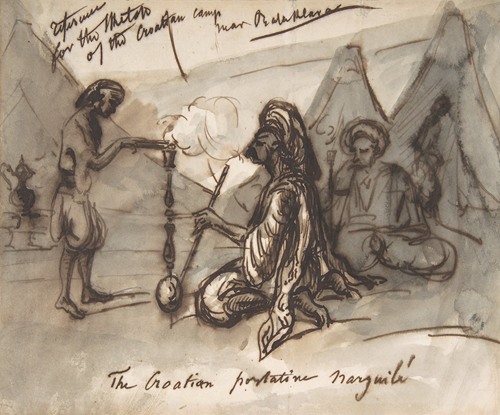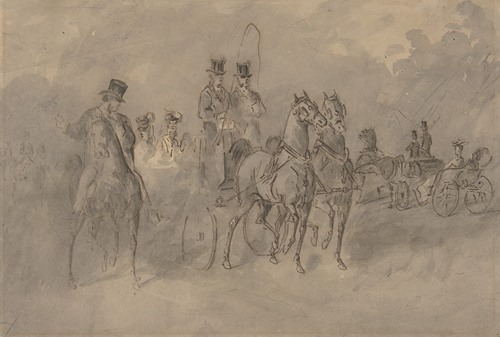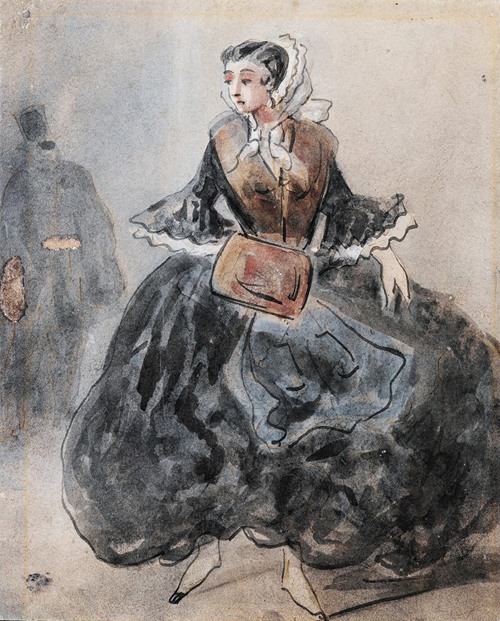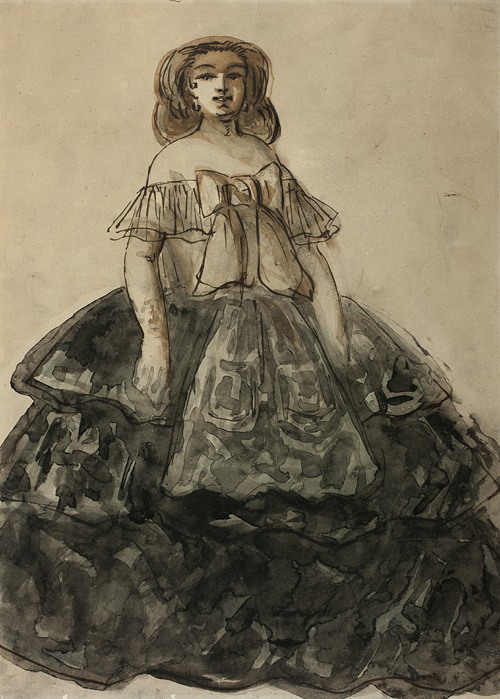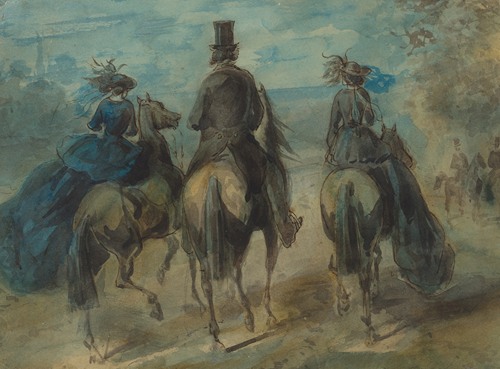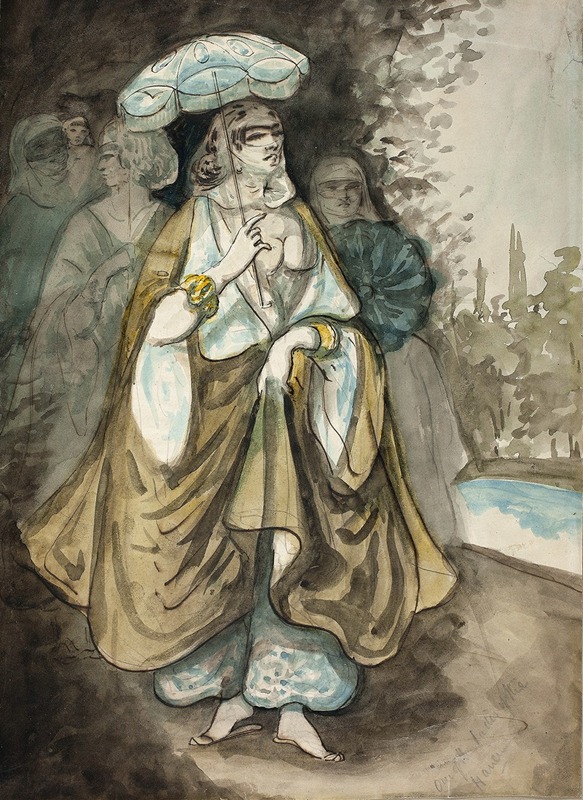
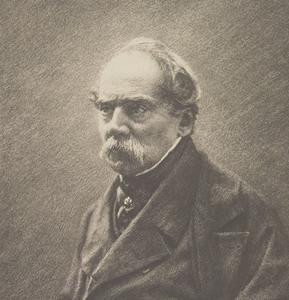
Constantin Guys, Ernest-Adolphe-Hyacinthe-Constantin, was a Dutch-born French Crimean War correspondent, water color painter and illustrator for British and French newspapers.
Guys was born and baptized in Vlissingen, the son of François Lazare Guys and his second wife, Elisabeth Bétin. His father had been appointed civilian chief of the French Navy in Rochefort in 1795 and was stationed in Vlissingen fom 1800 until 1806, after which the family moved to Calais. At the age of 20, Constantin served in the cavalry, but only a little later toured in Greece with Lord Byron. His career as an artist didn't start until he was about 40.
Baudelaire called him the "painter of modern life," and wrote a long essay on Guys in which he extensively praised his works, under the pseudonym "Monsieur G". Robert de Montesquiou wrote a review of Guys that acknowledged Baudelaire's essay, compared Guys favorably to Whistler, and emphasized his portrayal of details of women's clothing, and horse carriages. His subjects were Second French Empire life. In the Dutch novel "Au pair" by W. F. Hermans, one of the main characters is fascinated by Constantin Guys. Guys died in Paris, aged 90.
